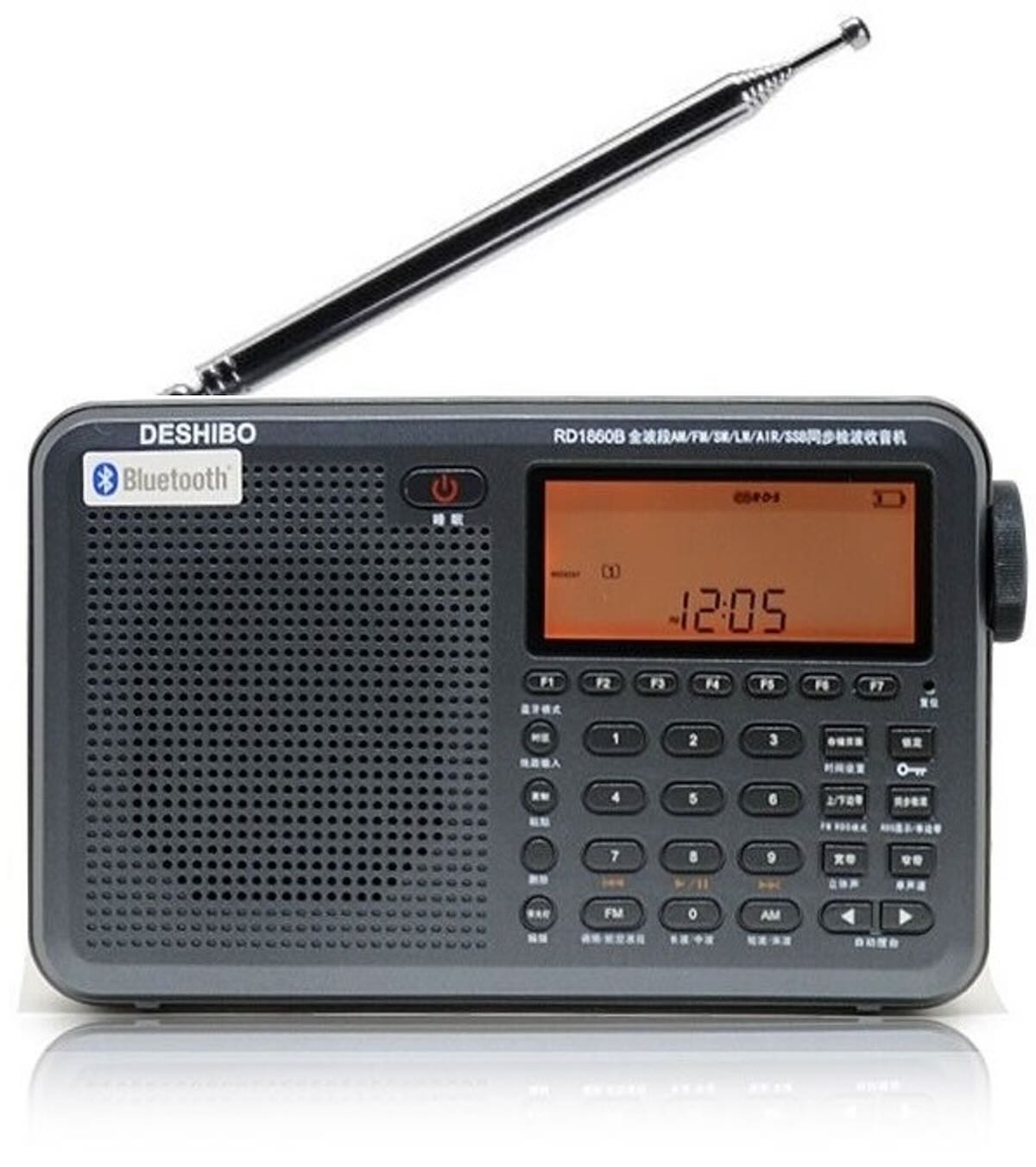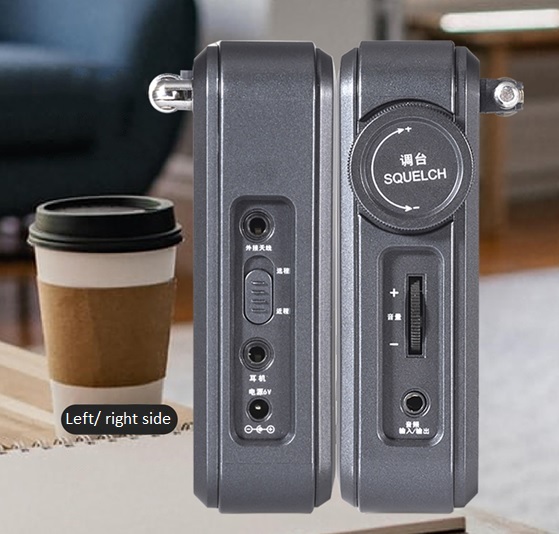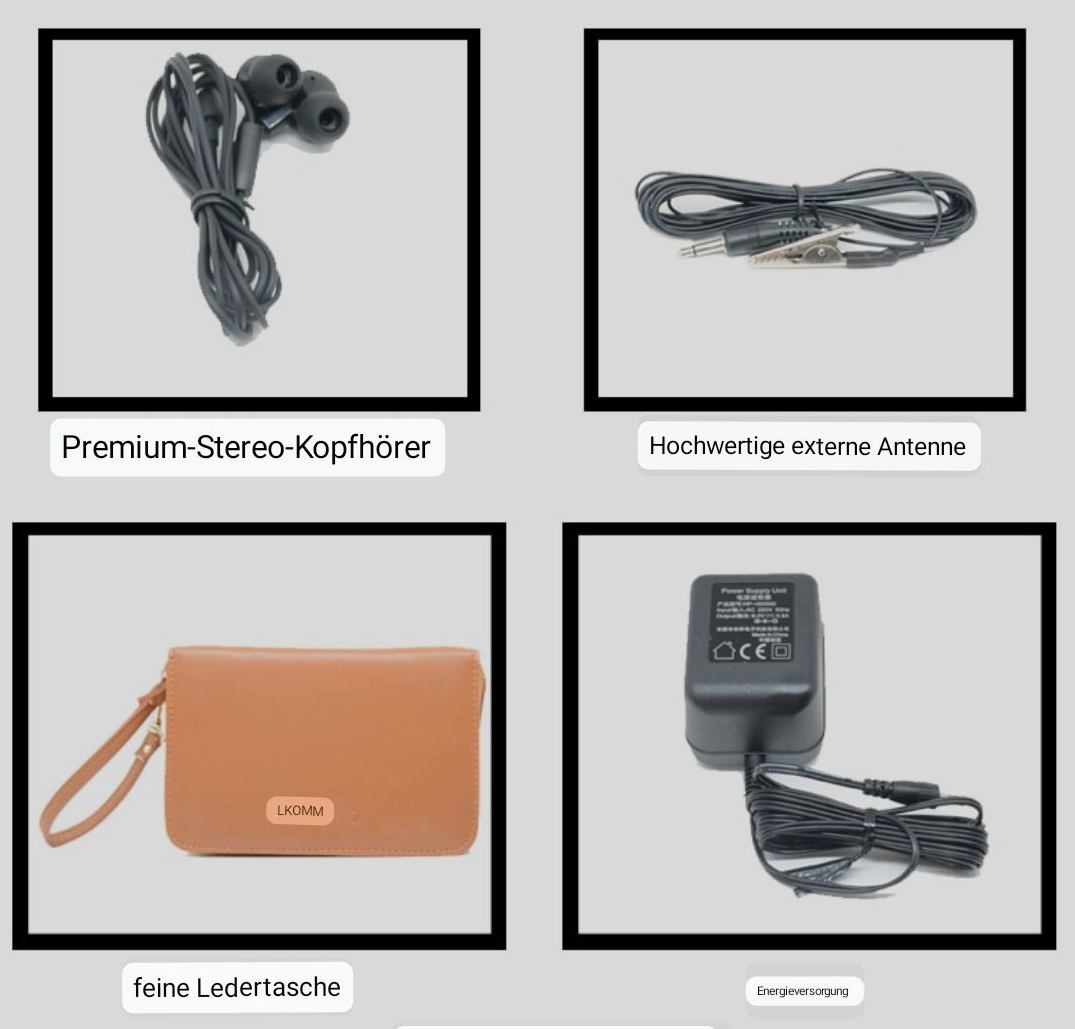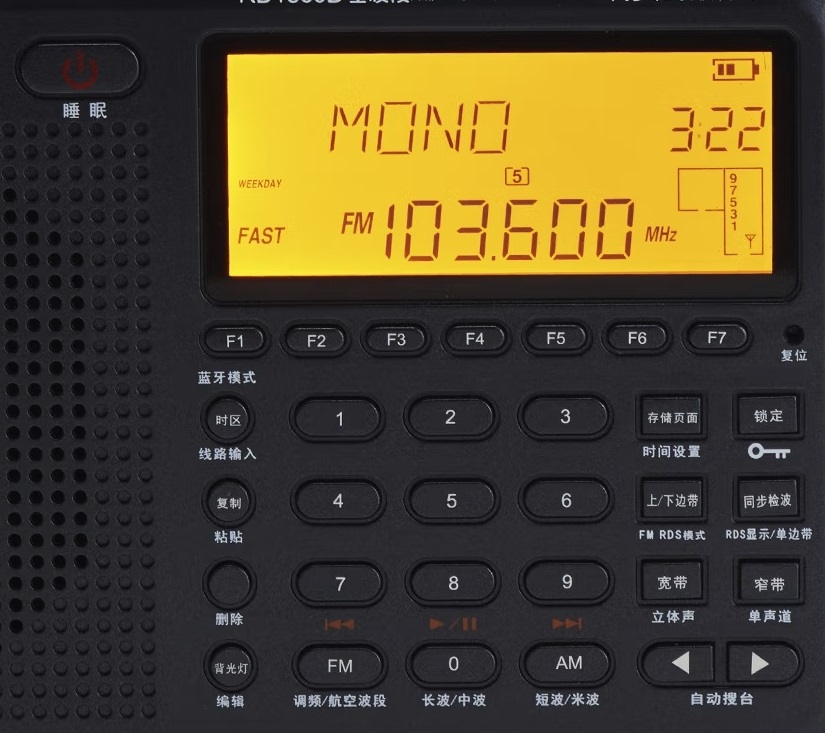Many thanks to SWLing Post contributor, Frank, in Germany, who shares the following guest post and review of the Deshibo RD1860BT:
Deshibo RD1860BT report
Hello Thomas,
Today I would like to report on a new portable world receiver. Unfortunately, new devices have not been found on the shelves of electronics retailers for a long time, but now in the depths of the world wide web. And that’s how I came across the Deshibo RD1860BT.
Deshibo is certainly known to many from their GA450 loop antenna. But Deshibo has also produced several radios, including the RD1780L, which is probably a little better known. New to the segment is the RD1860BT, which initially seemed like an old friend to me. An Eton Elite Executive? Yes, there are external similarities, but also differences.
Many months ago I had an Eton Elite Executive for a short time. I had heard of its excellent reception properties, which I can confirm, but the design is reminiscent of older receivers from the 80s, is relatively heavy, operation is sometimes a bit cumbersome, the protective cover does not protect properly. I find the device to be portable overall difficult. We didn’t become friends, so I sold it on to a Swede, who in turn became a friend.
I still missed the Eton. RDS on VHF is not found in any Tecsun , nor are there memory banks that can be written on.
Then I discovered the RD1860BT and couldn’t resist. First of all: the Deshibo is only labeled in Chinese for important function keys. But the friendly dealer on eBay provided me with an English manual before I bought it. That was the deciding factor, because I was sure that after a little use , the Deshibo could be operated blindly.
However, some questions have arisen in the user manual. Some things didn’t seem quite right, others were completely missing from the description. That’s why I decided to write my own manual on a journey of discovery of the new Deshibo. And so that it might also help others who might be interested in radio, I wrote it in English and attach it here.
Click here to download Frank’s version of the RD1860BT manual (PDF).
The Eton’s somewhat unsorted manual was very helpful, but I also added my own drawings. For example, I added an English-labeled keyboard as a back cover, so that the keys can be assigned without a long search.
Here you can already find the first differences to the Eton: the keyboard layout is a bit more orderly. Also, the Deshibo doesn’t have a metallic speaker grille (which frankly I don’t like about the Eton). The display, not the writing, is backlit in orange on the Deshibo . Most importantly, the Deshibo is a lot lighter than the Eton ( around 500g if I researched correctly). And that means: the structure of the Deshibo must be different.
But comparing the Eton and the Deshibo would be unfair. Is the Deshibo trying to emulate the Eton? Is it plagiarism? I cannot answer this conclusively. I could read about such comparisons on Chinese videos and test reports, and the Chinese-speaking people were of course enthusiastic about the Chinese lettering. The Deshibo is certainly aimed at the Chinese market.
But there are also many differences between Eton and Deshibo, so today I would say: the Deshibo RD1860BT is perhaps the child of a good marriage between Eton Elite Executive and XHDATA D-808.
What I find particularly noteworthy:
- RDS starts well on FM!
- All wavebands work like the XHDATA, but the Deshibo is a PLL receiver! And that’s exactly what I missed in my radio collection, which consists mainly of DSP or SDR radios.
- Squelch works on all wavebands (FM, LW, MW, SW, Airband ). I don’t think that’s possible with the Eton, but I can’t remember exactly.
- MW is very strong, but it’s a pity that you can only connect an external antenna for SW/ VHF/ Airband .
- Speaking of the antenna: the Eton has the disadvantage that you cannot connect a mono jack plug as an antenna, because this leads to a short circuit between ground and antenna. Not so with the Deshibo .
- ECSS works very well on AM, while I find the sync detector very mediocre like on almost all portables.
- Memory bank management is created as with the Eton. I find them extremely organized. 700 memory locations are a lot, as are the 100 memory banks on which the 700 memory locations are divided. That had already inspired me at the Eton.
- The easy-to-read display (in 3 brightness levels, can also be used when switched off) is very nice.
- NiMH batteries are charged via a stabilized power pack. It seems to deliver significantly more than 6V during the charging process (I could measure 11.1V at the plug). And so far I haven’t been able to use another power supply for charging either (although any 6V power supply works well for mains power). As with the Eton and older Tecsuns , the connection is made via a barrel connector (4.0×1.7), which I would now call a proprietary connection. Why no USB-C or at least micro-USB port in 2022? Carrying the AC adapter with you when traveling is less fortunate.
- Very nice and important for me when traveling (I love radio plays) is the possibility of being able to connect other devices via Bluetooth (5.1) or line in. Media control works well with Bluetooth via the keyboard, as does the connection between Deshibo and an external device. Newer Tecsun models can use Bluetooth, but not line in.
- If necessary, you should switch to pure battery operation. Overall, the Deshibo consumes very little power, so that a battery charge lasts a long time (unfortunately I can’t say the exact duration yet, but it’s over 20 hours).
- The graphite gray painted housing is very compact and streamlined, even downright elegant. An imitation leather bag is included as an accessory (comparable to the new Tecsun models). I personally prefer being able to take the device out of the case rather than attaching the protective cover to the device with magnets. But that’s clearly a matter of taste.
- The keys labeled in Chinese no longer bother me at all. I actually find her blind. Number keys are marked alphanumerically, some symbols have Latin letters (function keys F1-F7, FM, RDS).
About the cost: I paid €193 including shipping and taxes on eBay (actually it can be found for about $180). I have sometimes seen the Eton much cheaper. Nevertheless, I would like to say: the price is worth it.
Best wishes
Frank, Germany





Shawn’s last disgraceful comment made us quite disenchanted, as happened later with the Eton satellite. No one, not even Frank, commented again. Sometimes the way we express ourselves changes expectations and sometimes it gets it wrong.
Now that some time has passed, is there anyone who can make constructive comments?
It looks like the sister radio of a digitech and eton. I’m curious to see what this radio has to offer .
I just got this radio today and will give you my final thoughts on this radio when I do final testing tonight. This radio is not a junk radio by any means. Looking through the manual it seems to be a equal to my favorite eton elite executive. I just wonder if this is going to be the updated eton that has been mentioned before.
I tested the radio and in my opinion this radio is not what I thought it was. My rating for this radio is 3 stars. Before everyone gets mad at me I rated this radio because sound is average the ssb is ok but I think other radios for lower priced have better ssb. . The eton elite sangean and Tecsun have better sound. However it does have a lot of positive things like external antenna, Bluetooth rds . Aircraft . You’re better off without all the bells and whistles and go with the 1760.
Yes, it does have sync. I am not content with it (in former times i used a sony icf sw77, much better on sync of courde!), but by fine tuning ssb before sync the synchrpnous detection works propper.
Longwave…is working normally but i have to say that radio stations here in germany are rather rare to receive.
And yes, the chinese writing is really a pain. I asked for future plans of english spelling, answer: no! (By the way: chinese people are used to work with english spelling ;-))
It is a PLL. Steps of 5 or 1 kHz can be heard, of cours, but no muting. And on ssb: really analogue feeling (10 Hz steps).
This is typical of a Chinese manufactured radio which has Bluetooth. They will only become a speaker for the phone, they won’t transmit the radio output to a pair of Bluetooth headphones. That is really nice to listen to the radio without the cable from your head. It also means better quality headphones can be used.
The worlds two most populous countries (China, India internally) have digital radio mondiale (DRM) in the same frequency bands covered by this radio from with the only exception is from 47 – 65 MHz part of band 1. It is a Software Designed Radio. so why won’t they put in the decoding program because the radio can receive these signals, just not decode them. https://www.drm.org/wp-content/uploads/2022/11/MRR_v4.2.pdf is the minimum requirements for DRM receivers. I has also excellent information for testing of all receivers.
This review comes from Germany, where DAB+ is in wide spread use in the rest of Europe & Australia as well, where is it? The radio would need to add 174 – 230 MHz tuning. The decoding is virtually identical to DRM except for some variable settings.
Does the fact it is a PLL receiver mean that it doesn’t soft mute while tuning? That would be rather nice!
No sync ? The longwave band is also crippled and the Chinese writing is a pain.
Might sound good on SSB without a DSP wrecking the agc and audio.
Priced to compete with a PL-660 but has a few extras that Tecsun don’t offer like RDS and VHF airband squelch.
It certainly looks like a derivative of the G3.
According to the manual it does have sync. I wonder how well it works.
This looks more like a clone/enhancement of the E5/G5.